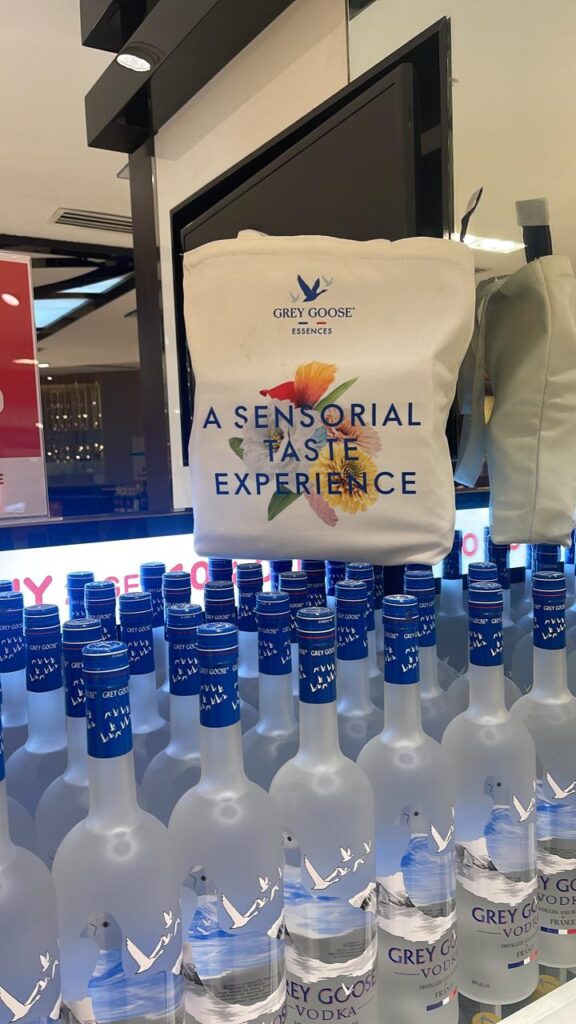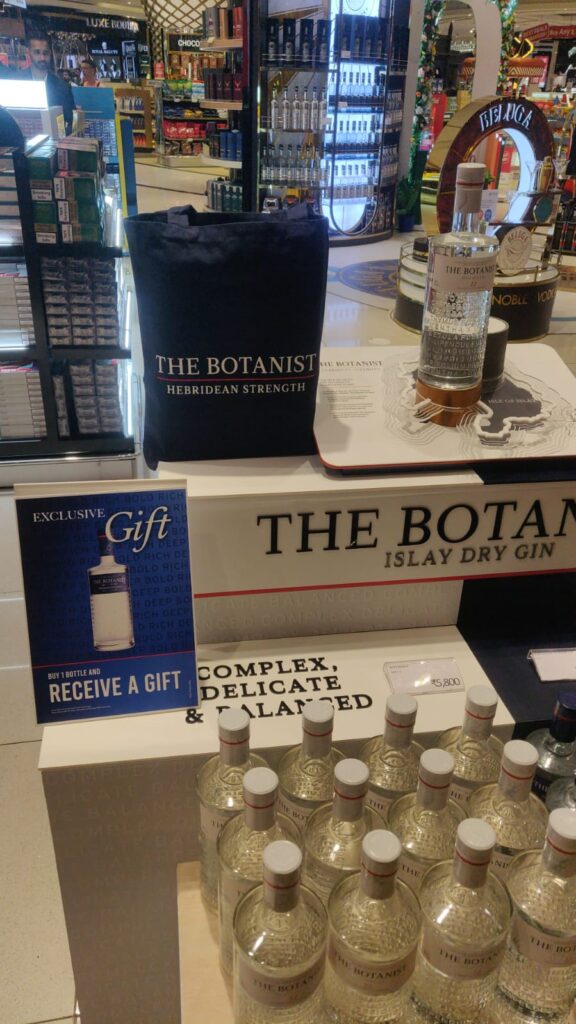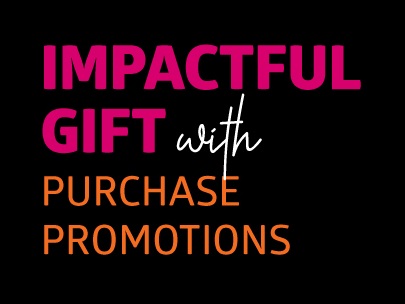PURCHASE WITH PURCHASE PROMOTIONS | GET MORE BRAND EXPOSURE
Consumers are always on the lookout for a great deal, and when it comes to shopping, nothing beats the excitement of getting an extra item for just a little more money. This is where Purchase With Purchase (PWP) promotions come into play.
PWP is a popular promotional tactic used by retailers to incentivize customers to make larger purchases by offering an additional product at a discounted price.
In this blog post, we will explore this marketing strategy in detail, highlighting its benefits for both retailers and consumers, and provide examples of successful PWP campaigns. So, if you’re interested in learning how PWP can drive sales and enhance customer loyalty, keep reading!


Reusable Retail Bags from Carrefour
Reusable shopping tote bags are an ideal item for purchase with purchase promotions due to their practicality and functionality, making them an attractive offer for customers.
With the increasing awareness of the importance of reducing single-use plastics, customers appreciate reusable bags as useful items that help them make a positive environmental impact.
We admire the clever strategy employed by Carrefour, where they create a desire among customers to obtain a bag by offering different options. These bags are affordably priced, making them a great addition to customers’ other purchases.
Additionally, reusable bags are durable and can be used multiple times, making them a convenient choice for consumers. Although they may cost more initially, these bags are a cost-effective option in the long run as they eliminate the need for single-use plastic bags.

What Are the Benefits of Purchase With Purchase Promotions?
1. Increase Sales
PWP promotions can encourage customers to make larger purchases than originally intended.
Customers often buy multiple items at once to save money and conveniently obtain their favorite products from a single retailer.
The more products they purchase, the lower the cost per item, which appeals to budget-conscious consumers.
By offering a discount on a second product, retailers enhance the perceived value of the purchase, motivating customers to buy more.
2. Encourage Impulse Buying
PWP promotions are designed to stimulate impulse buying.
The discounted or free product is often presented as a limited-time offer or available in limited quantities, creating a sense of urgency and scarcity that triggers impulse purchases.
Customers don’t need to overthink whether to spend more money or not; they simply need to decide if they want the offered product and purchase it along with another item.
Foster Customer Loyalty When customers feel they are getting a good deal, they are more likely to develop a positive
3. Foster Customer Loyalty
When customers feel they are getting a good deal, they are more likely to develop a positive perception of the brand and exhibit greater loyalty.
Moreover, PWP promotions can incentivize customers to make more frequent purchases or larger transactions.
Customers who take advantage of PWP promotions perceive themselves as receiving a good deal, leading to positive brand associations and increased customer lifetime value.
4. Enhanced Brand Awareness
PWP promotions can be a powerful tool for building brand awareness as they generate buzz around the brand and its products.
When customers see a PWP offer, it reminds them of the brand and its offerings.
The exclusivity of the offer can make the brand more desirable and sought-after, creating a sense of urgency to seize the deal before it expires.
Additionally, PWP promotions incentivize existing customers to make repeat purchases, reinforcing the brand’s presence in their minds.
PWP Promotion Strategy: Upselling
PWP promotions can be a powerful tool for building brand awareness as they generate buzz around the brand and its products.
When customers see a PWP offer, it reminds them of the brand and its offerings.
The exclusivity of the offer can make the brand more desirable and sought-after, creating a sense of urgency to seize the deal before it expires.
Additionally, PWP promotions incentivize existing customers to make repeat purchases, reinforcing the brand’s presence in their minds.
Here are some examples:
- When a customer is interested in a particular product, you could offer them a premium version of the product with additional features or benefits that the basic version does not have. For example, if a customer is interested in purchasing a backpack, you could offer them a premium version of the backpack with a built-in power bank or a hidden compartment for valuables.
- Another way to upsell merchandise is by bundling products together. For example, if a customer is interested in purchasing a shirt, you could offer them a bundle with the shirt and a matching accessory such as a tie or a scarf.
- You could also suggest complementary products that the customer may be interested in. For example, if a customer is purchasing a pair of shoes, you could suggest a matching bag or a pair of socks that would complement the shoes.
- When a customer is interested in purchasing a product, you could offer them an extended warranty on the product. This would provide them with additional protection and peace of mind, which could be a compelling reason for them to upgrade their purchase.
- You could offer customers the option to personalize their merchandise for an additional fee. For example, if a customer is interested in purchasing a phone case, you could offer them the option to add their name or a custom design to the case for a small fee. This would make the merchandise more unique and personalized to the customer’s preferences.
Factors to Consider When Implementing PWP Promotions
- Financial or Marketing BudgetPWP promotions can be incredibly effective at driving sales and increasing customer loyalty, but they can also be quite costly to execute.If a brand doesn’t have the necessary budget to cover the costs of offering a purchase with a purchase promotion, it may end up hurting its bottom line rather than helping it. It is crucial to talk to your sourcing partner to check the best options available that will fit your marketing budget and needs.
- Target AudienceNo matter what type of promotion, brands should always consider their target audience before implementation. One of the biggest reasons for this is that different customer segments may have different preferences and motivations when it comes to purchasing decisions. A promotion that resonates with one group of customers may not be as effective with another.For example, if a brand’s target audience is price-sensitive and looking for a good deal, a purchase with purchase promotion that offers a discount or free product may be very effective.On the other hand, if the brand’s target audience is more focused on quality and prestige, a promotion that emphasizes exclusivity or limited availability may be more effective.
- QualityThe quality of the promotional item used can impact the overall perception of the brand and the promotion among customers.If the promotional item is of poor quality, customers may perceive the brand as cheap or untrustworthy. This can lead to a negative perception of the promotion, and customers may be less likely to participate in future promotions from the brand.Meanwhile, if the promotional item is of high quality, customers may perceive the brand as generous and trustworthy and may be more likely to participate in future promotions or even make repeat purchases.
- Inventory ManagementPreparing inventory management before implementing a purchase-with-purchase promotion helps brands to ensure that they have enough inventory to meet the demand generated by the promotion.If a promotion is successful and generates a lot of customer interest, but the brand doesn’t have enough inventory to fulfil purchases, it can lead to a negative customer experience, lost sales, and damage to the brand’s reputation.
- Promotion DurationThe target duration of PWP promotion is an important factor that brands should consider before implementing it.A shorter promotion duration can create a sense of urgency among customers and encourage them to participate before the promotion ends. This can lead to higher participation rates and a sense of excitement among customers.On the other hand, a longer promotion duration can help build anticipation and excitement among customers. By promoting the promotion in advance and for a longer period, brands can generate buzz and interest among customers, leading to higher participation rates.However, if the promotion duration is too long, customers may become fatigued or lose interest. This can lead to lower participation rates and a lower return on investment for the brand.
- Marketing and Advertising StrategiesMarketing and advertising strategies are essential for building awareness of the promotion. By promoting the promotion through various channels, such as social media, online and in-store advertising, brands can reach a wider audience and attract more customers to participate.These strategies also create excitement and anticipation among customers. By using creative and engaging messaging, brands can generate buzz and interest among customers, leading to higher participation rates.
Potential Challenges of PWP Promotions
- Cannibalization of SalesCannibalization occurs when the promotion encourages customers to only buy the promoted product at a discounted price instead of buying other products at full price.
- Reduction of Profit MarginIf customers switch from buying other products at full price to buying the promoted product at a discounted price, the brand’s profit margins will decrease.This is because the discounted price may not cover the full cost of producing and promoting the product, resulting in lower profit margins.
- Stockouts and OversupplyTechnical issues, such as an inaccurate display number on a website or a machine counting error, can contribute to stockouts. If a PWP promotion is advertised, but the product is out of stock, customers may become frustrated and choose to shop elsewhere, which can result in lost sales and revenue.On the other hand, oversupplies can result in excess inventory that may not sell, tying up cash flow and resources. According to NetSuite, one of the common causes of oversupplies is inaccurate inventory counts, which can be addressed by increasing inventory accuracy.Therefore, it is important to carefully manage inventory levels and accurately forecast demand when implementing PWP promotions to avoid stockouts and oversupplies.
- Perceived Value of the PWPPerceived value is a challenge when implementing (PWP) promotions because customers may not see the promotion as a good value proposition. If customers do not perceive the promotion as offering a good value, they may be less likely to participate in the promotion, which can result in lower sales and revenue.To overcome challenges with perceived value in PWP promotions, brands can take several steps:
- Offer a significant discount: Brands can offer a discount on the promoted product that is significant enough to encourage customers to participate in the promotion.
- Promote high-value products: Brands can promote products that have a high perceived value among the customer base, such as premium or luxury products.
- Offer relevant products: Brands can offer products that align with the needs and interests of the customer base, such as products that are in high demand or have received positive reviews.
- Communicate the value: Brands can communicate the value of the promotion through advertising and marketing, emphasizing the benefits of the promoted product and the savings customers will receive.
